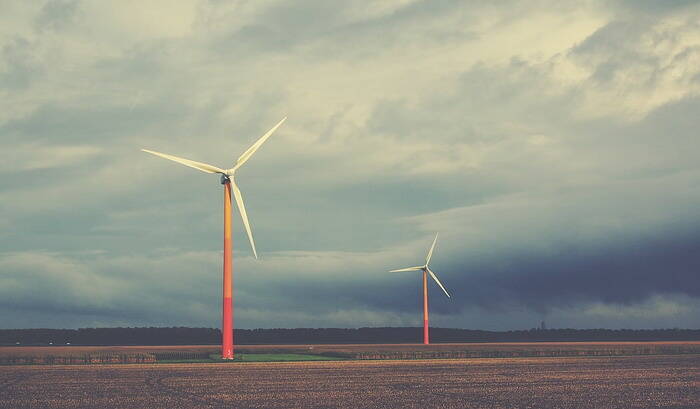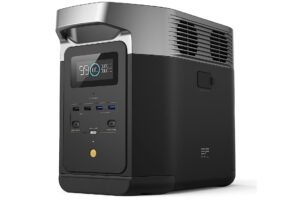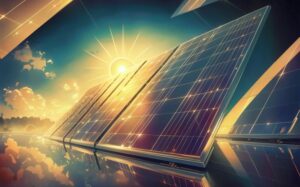Why Do Wind Turbines Stop in High Winds?

Wind turbines, those towering symbols of renewable energy, have become an increasingly common sight across many parts of the world. Their large blades spinning against the sky not only generate electricity but also signify a shift towards cleaner energy sources.
However, you might have noticed that during particularly windy conditions, when one would expect these turbines to generate even more power, they often come to a halt. This might seem counterintuitive at first glance, so why do wind turbines stop in high winds?
The Engineering Behind Wind Turbines
To understand why turbines stop in high winds, it’s essential to grasp some basics of their design and operation. Wind turbines are engineered to convert the kinetic energy in wind into electrical energy using a rotor (comprising blades or sails), a generator, and various control systems. The wind turns the blades, which spin a shaft connected to a generator, thus producing electricity.
Optimal Operating Range
Wind turbines are designed to operate within a specific range of wind speeds. The lower limit of this range is known as the ‘cut-in’ speed, at which the turbine can start generating electricity. The upper limit, known as the ‘cut-out’ speed, is where the turbine must stop generating to avoid damage. This range is carefully engineered to maximize efficiency and longevity while ensuring safety.
The Reason for Stopping: High Winds and Turbine Safety
When wind speeds reach the turbine’s cut-out speed, usually around 25 to 35 miles per hour (40 to 56 kilometers per hour), control systems automatically stop the turbine. This precaution is taken for several reasons:
1. Preventing Damage
High winds can exert excessive stress on the turbine structure, including the blades, gearbox, and generator. Stopping the turbine in high winds protects these components from wear and damage, ensuring the turbine’s longevity.
2. Safety
In addition to protecting the turbine itself, stopping operations in high winds also ensures the safety of maintenance workers and the surrounding environment. A turbine failure during high winds could have catastrophic consequences.
3. Mechanical Limits
The turbine’s generator and gearbox have mechanical limits. Operating beyond these limits can result in overheating and mechanical failure.
How Turbines Stop
When it’s necessary to stop a turbine, the control systems can engage various mechanisms. One common method involves pitching, or turning, the blades out of the wind, reducing their ability to catch wind and generate lift. Some turbines also have mechanical brakes that can be applied to hold the rotor stationary.
High Winds Aren’t Always Wasted
Modern wind turbines are increasingly sophisticated and equipped with advanced control systems that allow them to capture energy from a wide range of wind speeds efficiently. Some turbines are designed to operate in higher wind speeds, and research is ongoing to develop turbines that can safely and effectively operate in even more extreme conditions.
Moreover, the broader energy system is evolving to better handle the variability of wind energy. Grid operators are becoming more adept at integrating renewable energy sources, and technologies like energy storage are playing an increasingly important role in balancing supply and demand.
Strategies for High Wind Conditions
While wind turbines are designed to stop in high winds as a safety precaution, researchers and engineers are continuously exploring ways to enhance their performance in such conditions:
1. Improved Aerodynamics
Advances in aerodynamic design can help turbines operate more efficiently at higher wind speeds. Refined blade shapes and control systems can optimize performance while reducing stress on turbine components.
2. Active Control Systems
Some turbines are equipped with advanced control systems that can adjust blade pitch and orientation in real-time to optimize performance in varying wind conditions. These systems can enable turbines to operate more effectively in high winds while minimizing wear and tear.
3. Structural Enhancements
Enhancements in turbine materials and structural design can improve their resilience to high winds. Stronger and lighter materials, such as carbon fiber composites, can help reduce the risk of damage and extend the lifespan of turbines.

Wind turbines are designed to stop in strong winds to protect their structure, image source: Unsplash
4. Grid Integration
Grid operators are developing strategies to manage the variability of wind energy, including curtailment and energy storage. By integrating wind power with other renewable energy sources and storage technologies, grid operators can maintain stability and reliability even during periods of high wind.
5. Research and Development
Ongoing research into wind turbine technology aims to address the challenges of operating in high winds. From innovative blade designs to advanced control algorithms, research efforts continue to push the boundaries of what is possible in wind energy production.
Economic Considerations
While the primary concern in high winds is turbine safety and performance, there are also economic considerations to take into account. Downtime due to high winds can result in lost revenue for wind farm operators, as electricity generation is temporarily halted. Therefore, finding ways to safely increase turbine uptime in high winds can have significant economic benefits.
Conclusion
In conclusion, wind turbines stop in high winds to prevent damage, ensure safety, and protect their mechanical components. This operational quirk is a result of careful engineering designed to maximize the turbines’ efficiency and lifespan. So, whenever you see a massive wind turbine stopped, be sure that there is now wind at all, or a storm with strong winds is coming.
However, while wind turbines are designed to stop in high winds to protect themselves and ensure safety, ongoing research and technological advancements aim to improve their performance and resilience in challenging conditions. By balancing safety considerations with the need for efficient energy production, engineers and researchers are working to maximize the potential of wind energy as a clean and sustainable power source. As technology continues to evolve, wind turbines will play an increasingly important role in our transition to a low-carbon energy future.






